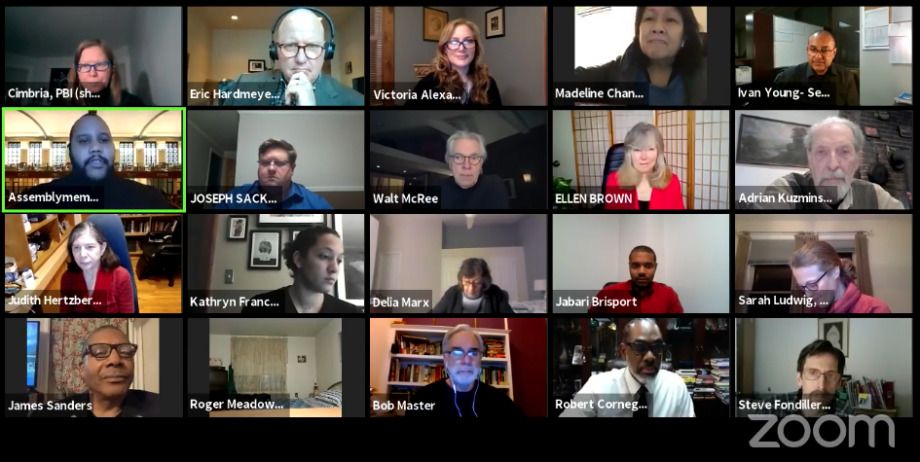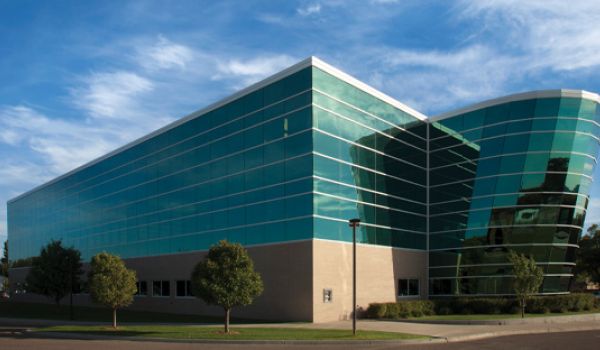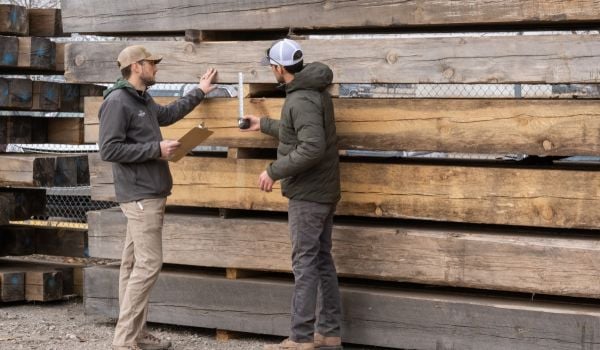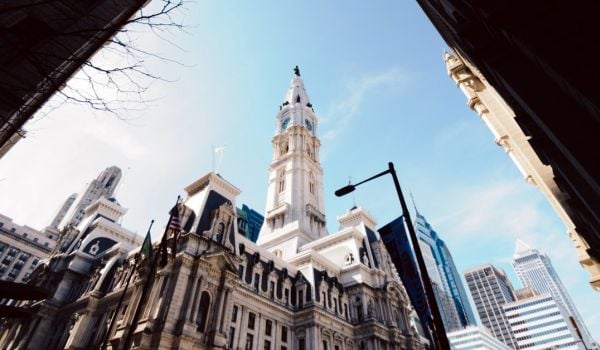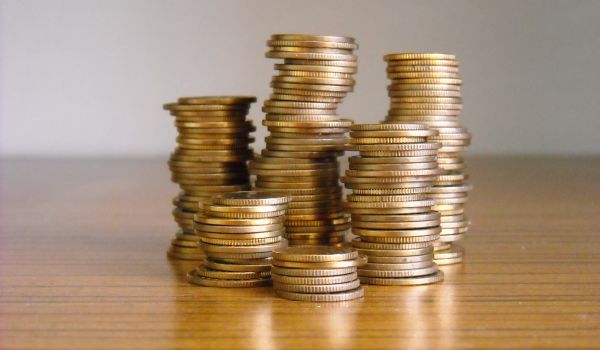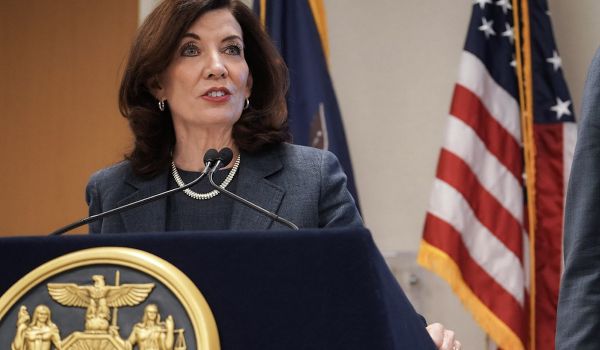When I first met NY State Senator James Sanders, Jr., in 2019, he was hoping to go on a trip to visit Bismarck, North Dakota — a place that could hardly be more different than his district and roots in the Far Rockaway section of Queens, New York.
Of course, 2020 has put that potential visit on the backburner. But Sanders started out 2021 by bringing a bit of North Dakota to New York, at least virtually — and if he has his way, legislatively as well.
As the chair of the NY State Senate Committee on Banks, Sanders’ office co-convened an online conversation last week featuring other New York State and local legislators, labor leaders, national and local advocacy organizations and Eric Hardmeyer, president and CEO of the state-owned Bank of North Dakota. Sanders recently introduced a bill to establish a state-owned bank in New York, modeled largely after the North Dakota bank.
New York isn’t alone. Over the last few weeks, legislators in Washington State, Oregon, Philadelphia and San Francisco all introduced bills to establish or take the necessary steps toward the establishment of “public banks.” Public banks are defined by the Public Banking Institute as banks owned by the public through a local, state, national or tribal government that serve as a depository for government funds. The state government of North Dakota deposits all of its taxes, fees and other revenues in the Bank of North Dakota. While cities and states have been taking tentative steps toward establishing these institutions for some time, 2021 could be public banking’s watershed moment.
Across the country, state and local governments currently hold more than $600 billion in deposits. Sanders and the other legislators envision more public banks using those deposits to do what the Bank of North Dakota has been doing since 1919 — playing a mostly behind-the-scenes role to give community lenders a boost. Ideally, it’s enough of a boost to reach communities that have historically faced barriers to credit and banking. Legislators are starting to see public banks as a powerful potential tool to ensure a recovery that is more equitable than the last time.
Supporters say also they are discontented with private banks leveraging public deposits in ways that don’t reflect public values — particularly the largest private banks, which hold an increasing majority share of overall deposits but still remain heavily invested in industries like fossil fuels. They want those deposits to support more lending closer to home, and for purposes that better meet community needs like affordable housing, first-time homeownership, renewable energy or small business.
Critics such as banking industry associations worry that public banks would compete unfairly with the private sector, would potentially put public dollars at risk if such a bank turns out to be unprofitable, or would be open to corruption or political favoritism. They argue that private banks have more than enough capacity to meet the needs of communities — despite consistent evidence that private banks are not doing so.
During the discussion with NY state and local legislators last week, Hardmeyer drew similarities between the plight of Black and immigrant borrowers in New York City who still face discrimination from banks today with those of North Dakota farmers a century ago who felt spurned by big banks in Chicago and New York.
“A lot of the discontent I’m hearing in New York sounds similar to what North Dakota faced,” said Hardmeyer last week. “Our mission is the same as it was 100 years ago, to support economic development across the state, but within that we’re given a lot of latitude to work with the banking and credit union community to figure out what that looks like over time.”
Hardmeyer does not advocate for the Bank of North Dakota’s model, but over the years he says he has spoken to legislators and banking industry groups in 30-40 states, answering questions about the bank. “I find it is a contentious issue wherever I go,” he said. “I will not advocate, but I will educate.”
Last week was no exception. Newly elected NY State Senator Jabari Brisport asked a common question of how to address the criticism that a public bank would unfairly compete with private banks.
“Our whole model is built on partnering with banks, not competing with them,” Hardmeyer said in response. “The economic development loan programs we have are all done in participation, meaning local banks originate the loan and sell a portion to us. It allows them to leverage relationships and make more loans available.”
In keeping with its partner-not-compete model, the Bank of North Dakota has no branches, and more than 98 percent of its deposits come from the state government, which is required by law to deposit all its taxes, fees and other revenues in the state-owned bank.
Hardmeyer also emphasized the state-owned bank does not compete for municipal deposits — leaving those to local banks. Not that community banks would lose deposits to a municipal bank in San Francisco, which keeps most of its municipal deposits at Bank of America; or in Philadelphia, which does most of its banking at Citizens Bank.
The only loans the Bank of North Dakota makes directly to individuals are student loans and some home mortgages in only the most rural parts of the state. “And we do that only with the full backing of the banking associations in North Dakota,” Hardmeyer said. “What we really are not is a retail bank. You can’t come to the Bank of North Dakota for a car loan or a boat loan or personal loan of any kind other than a student loan. We’ve set that aside and said the private sector can handle that.”
But this point also raised a key question from NY State Assembly Member Victor Pichardo, who is Sanders’ counterpart in the lower house, chairing that body’s committee on banks. Pichardo wanted to know if the Bank of North Dakota had a model for supporting retail banking where traditional lenders have already abandoned a community.
“We’re seeing traditional private banks leaving, they don’t have footprints any more,” said Pichardo. “In my [Bronx] district, with 125,000 people, we effectively have maybe one bank in a three mile radius.”
Hardmeyer had no clear answer based on the Bank of North Dakota’s model. “Every state if they choose to go down this path will have something unique,” said Hardmeyer. “Keep in mind what it is that you’re trying to solve rather than trying to be everything to everybody. I think that gets you where you need to be.”
It would take more long-term investment from elsewhere to start new banks or credit unions in underserved neighborhoods — though it’s not impossible to do so, at least in the Bronx. If there were more new community banks or credit unions in the Pichardo’s Bronx or Sanders’ Far Rockaway or Brisport’s Brooklyn, the numbers indicate a state-owned bank with a behind-the-scenes model can make them a stronger presence as a group. Community banks hold a higher market share of deposits in North Dakota than in any other state, according to an analysis of FDIC data by the Institute for Local Self-Reliance. And that’s important for small businesses: The Institute for Local Self-Reliance also found that in states where community banks have more market share, more Paycheck Protection Program loans went out to businesses, for example. North Dakota was far and away the leader in making Paycheck Protection Loans, as of data from June 2020.
While there are some differences between them in terms of proposed legal structure and governance, all of the public bank bills introduced in the past month envision institutions that will partner with community banks and credit unions instead of competing with them.
And it can be a very profitable model. The Bank of North Dakota had 16 straight years of record profits until 2020, and even though profits were down a bit last year, Hardmeyer said it was still a top-five year in terms of profitability for the bank. The bank typically allocates some of those profits to pay into the state’s general budget and keeps the rest to invest in the bank’s growth. Since inception, the state-owned bank has paid more than a billion dollars back into the state’s budget.
“North Dakota is a very red state with two very socialist institutions, a state-owned bank and state-owned grain mill and elevator,” said Hardmeyer. ”Would they be created today? I think unlikely, but today we’re such a part of economic development, you would be hard pressed, I think, to eliminate the bank. It is really ingrained in North Dakota, in our history, and the fact that it works. It may not be the model that others choose.”
This article is part of The Bottom Line, a series exploring scalable solutions for problems related to affordability, inclusive economic growth and access to capital. Click here to subscribe to our Bottom Line newsletter.

Oscar is Next City's senior economic justice correspondent. He previously served as Next City’s editor from 2018-2019, and was a Next City Equitable Cities Fellow from 2015-2016. Since 2011, Oscar has covered community development finance, community banking, impact investing, economic development, housing and more for media outlets such as Shelterforce, B Magazine, Impact Alpha and Fast Company.
Follow Oscar .(JavaScript must be enabled to view this email address)



